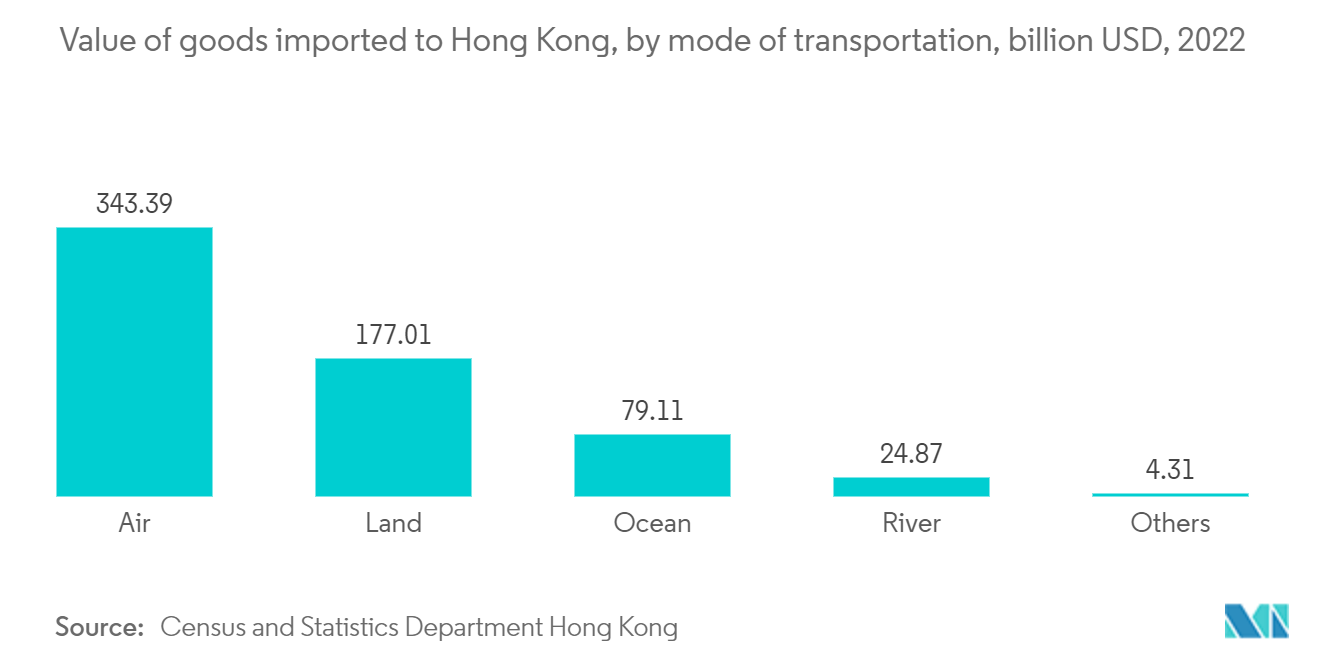Market Trends of Hong Kong Freight And Logistics Industry
Increase in Trade is Driving the Growth of the Market
- A Special Administrative Region of the People's Republic of China now exists in Hong Kong. The 'One Country, Two Systems' approach grants the HKSAR a considerable level of autonomy in commerce, finance, and currency. The Basic Law guarantees the expansion of crucial components that make Hong Kong an international financial center. It states that the overall value of products exported by Hong Kong fell by 1.4% in May 2022, while the total value of imported goods rose by 1.3%. Despite a 1.1% increase year-over-year in April 2022, the value of total exports fell by 1.4% in May 2022 to USD 388.1 billion.
- Trade serves as a major growth driver for the logistics industry; for example, air transport is a critical mode for Hong Kong’s trade. The country functions as a significant international trading hub, heavily reliant on trade. In 2022, Hong Kong saw domestic exports and re-exports totaling around 4.53 trillion Hong Kong dollars (USD 577.98 billion), while goods imported amounted to about 4.93 trillion Hong Kong dollars (USD 629.02 billion), according to the Census and Statistics Department of Hong Kong.
- Mainland China stands as the most important market for items transported by air, both in exports and imports. The government is investing in the logistics infrastructure due to growing trade. In 2022, Mainland China remained Hong Kong’s largest export market, accounting for USD 328 billion, according to the Census and Statistics Department of Hong Kong.

Air Freight is Dominating the Market
- Hong Kong stands tall as the regional logistics center for the Asia Pacific, boasting an extensive network linking to vital global destinations. Its connectivity, coupled with top-tier aviation and maritime infrastructure, positions it as a premier transportation hub in the region. According to the latest Fitch Solutions country risk and industry research, Hong Kong's transport network efficiency ranks second only to Singapore, scoring an impressive 95.1 out of 100.
- The Transport and Housing Bureau of Hong Kong, alongside the Civil Aviation Administration of China, has extended the current air services arrangement. This extension permits designated airlines from all GBA cities to engage in code-sharing with land and sea transport operators, simplifying commuting between GBA cities.
- The Hong Kong International Airport (HKIA) stands as the region's second busiest cargo facility, equipped with five air cargo handling facilities. A report by the Airport Authority reveals a 12.5% surge in air cargo volumes in 2021, surpassing the pre-pandemic levels recorded in 2019, reaching 5 million tons. By 2024, upon the completion of Hong Kong’s third runway, this capacity will expand to 8.9 million tons.
- Looking ahead, Hong Kong is poised to maintain its stature as an international airfreight gateway due to its free trade policy, robust supporting services, streamlined customs procedures, and strategic proximity to mainland China. The anticipated completion of the three-runway system at Hong Kong International Airport by 2024 is expected to further bolster the region's capacity for freight movement in the coming years.


